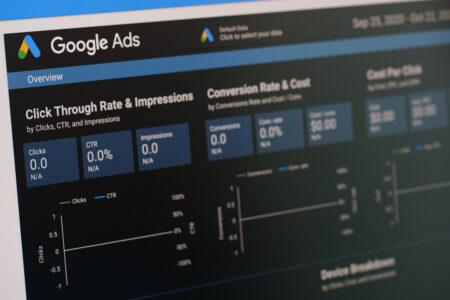It’s “Rock ‘Em Sock ‘Em Robots” for the digital age.
Hot on the heels of OpenAI’s recently-launched GPT-3 powered language model—ChatGPT (weighing in at 45 terabytes of text data)—here comes Google Bard (“the fervour with the servers”) to rival the wildly successful software.
Since its launch in November 2022, ChatGPT has taken the world by storm with its revolutionary advancements in the field of Natural Language Processing (NLP). But with Google’s soon-to-be new software on the block, the AI tech race just got even more interesting.
In this article, we compare what we know about both AIs so far, including features, language models and more.
The software in context
What is ChatGPT?
Developed by OpenAI with Microsoft backing, ChatGPT is an AI language model that has been trained to write like a human. It can perform a bunch of different language-related tasks such as answering questions, providing information, translating language, and optimising or reducing text.
One of the key things that sets ChatGPT apart from the copy bots that came before is that it ‘remembers’ the thread of your conversation and can build on it with—for the most part—natural and sensical responses.
Bard is another, slightly newer AI language model that’s not yet available to the public. Developed by Google, Bard uses a different language processing model to ChatGPT (more on this below) but it is also designed to answer questions, generate text, and provide information.
In their official announcement blog, Google said Bard “seeks to combine the breadth of the world’s knowledge with the power, intelligence and creativity of our large language models. It draws on information from the web to provide fresh, high-quality responses.”
Which language models are in use?
Both AIs are powered by Large Language Models (LLMs) at their core, but the framework behind each works a bit differently.
ChatGPT uses a language model called Generative Pre-trained Transformer 3.5 (GPT-3.5). Bard, on the other hand, uses Google’s patented Language Model for Dialogue Applications (LaMDA) framework.
Put simply, the LaMDA model focuses specifically on conversational and dialogue-related tasks, while GPT-3.5 functions as a more general-purpose language model that’s able to perform a wider range of NLP tasks including conversation and dialogue.
Where do they get their info from?
ChatGPT was systematically fed with large sets of data to create its knowledge base. It can’t access real-time information from the Internet, and it has no knowledge of world events past 2021, making the data it was trained on somewhat dated even at this point.
Google’s Bard, however, draws its information directly from the web and—once integrated with Google’s search engine—will have access to an endless amount of data, making its knowledge base much richer and fresher and giving it the edge when it comes to accuracy and sources.
It’s worth noting, too, that Google has confirmed they will initially launch Bard with a lightweight version of the LaMDA model which requires less computing power and will be easier to scale to more users and get more feedback.
When is Bard being launched?
Bard is currently in the testing phase, but Google has said that it will be made accessible to the public “in the coming weeks” – so keep your eyes peeled!
So, which one is better?
It’s too soon to tell. You could say that ChatGPT has the edge at the moment since it’s available for use and has been refined by millions of people testing it. However, you could also conclude that Bard will be better, given its ability to draw its knowledge from the world wide web – we’ll just have to wait and see.
Rest assured, our keen-eyed human copywriters and SEO specialists are keeping up with the curve on all this exciting new AI, so watch this space for more updates and articles.
Let's collaborate
Partner with us
Let’s work together to create smarter, more effective solutions for your business.
Related blogs
Who we are
Explore how our culture and expertise fuel digital innovation
Join us








